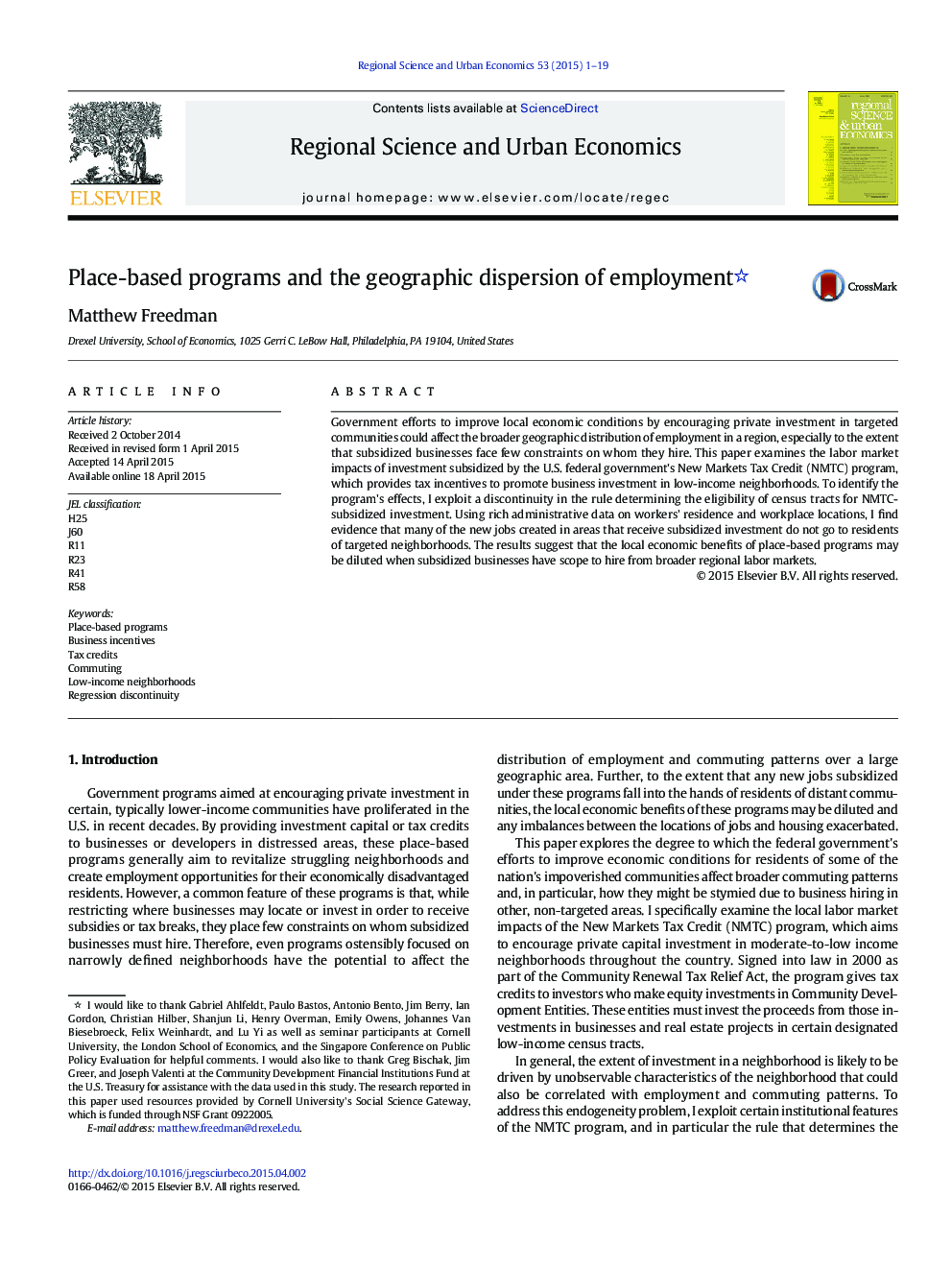| Article ID | Journal | Published Year | Pages | File Type |
|---|---|---|---|---|
| 983244 | Regional Science and Urban Economics | 2015 | 19 Pages |
•Many governments use tax incentives to encourage investment in distressed areas.•Subsidized businesses often have scope to hire from broader regional labor markets.•I study the labor market effects of the federal New Markets Tax Credit program.•I exploit a discontinuity in the rule determining tract eligibility for NMTC funds.•Firms' hiring outside designated neighborhoods dilutes the NMTC's local benefits.
Government efforts to improve local economic conditions by encouraging private investment in targeted communities could affect the broader geographic distribution of employment in a region, especially to the extent that subsidized businesses face few constraints on whom they hire. This paper examines the labor market impacts of investment subsidized by the U.S. federal government's New Markets Tax Credit (NMTC) program, which provides tax incentives to promote business investment in low-income neighborhoods. To identify the program's effects, I exploit a discontinuity in the rule determining the eligibility of census tracts for NMTC-subsidized investment. Using rich administrative data on workers' residence and workplace locations, I find evidence that many of the new jobs created in areas that receive subsidized investment do not go to residents of targeted neighborhoods. The results suggest that the local economic benefits of place-based programs may be diluted when subsidized businesses have scope to hire from broader regional labor markets.
